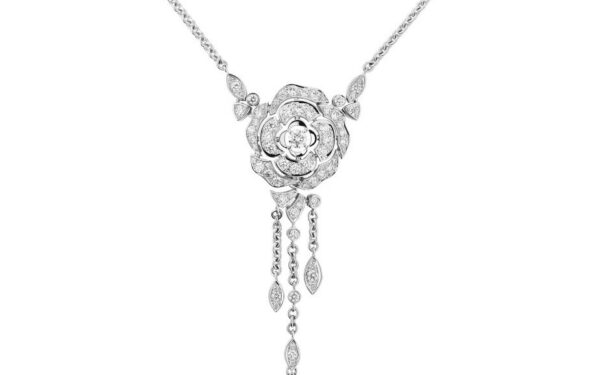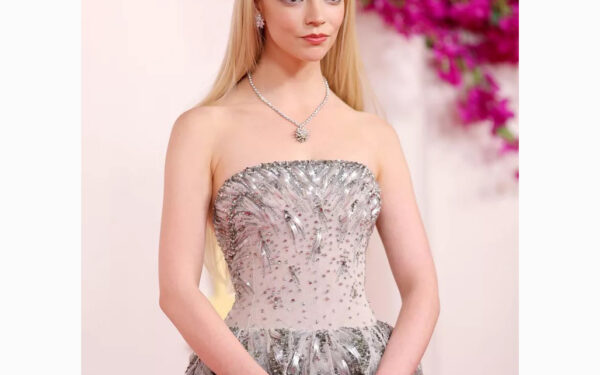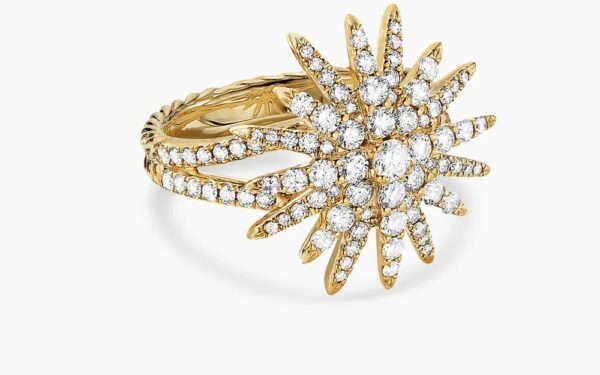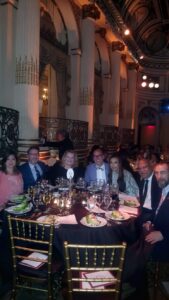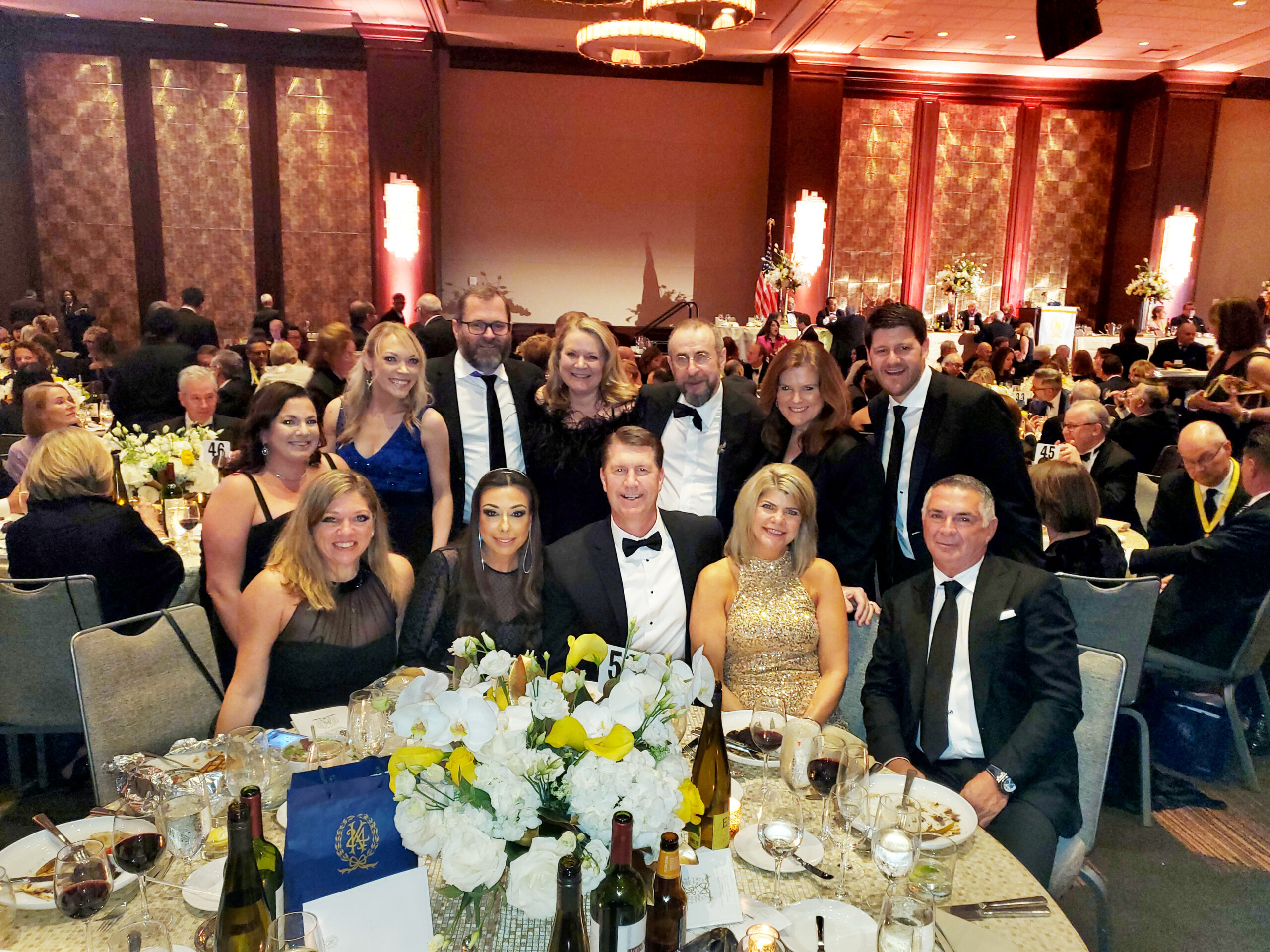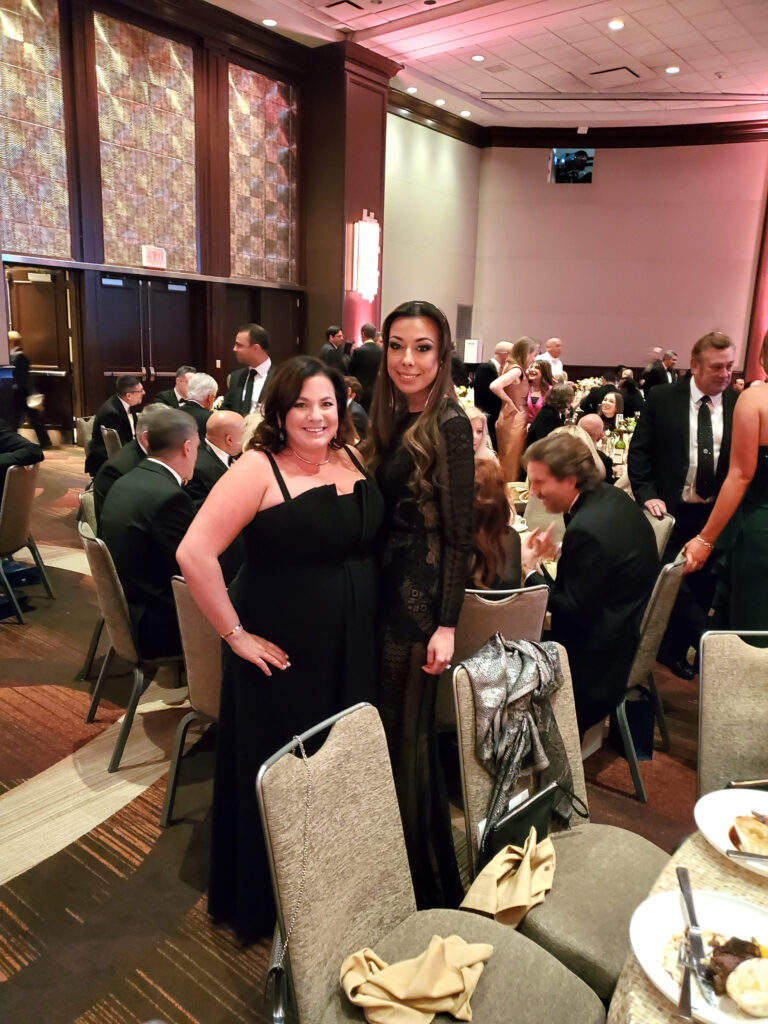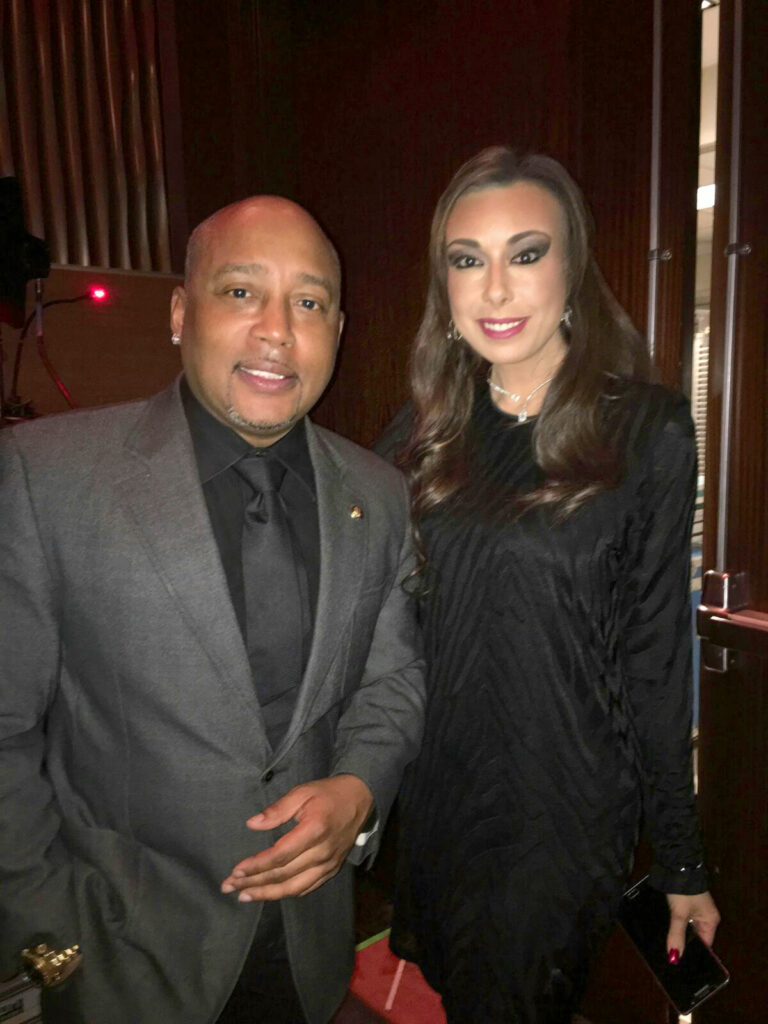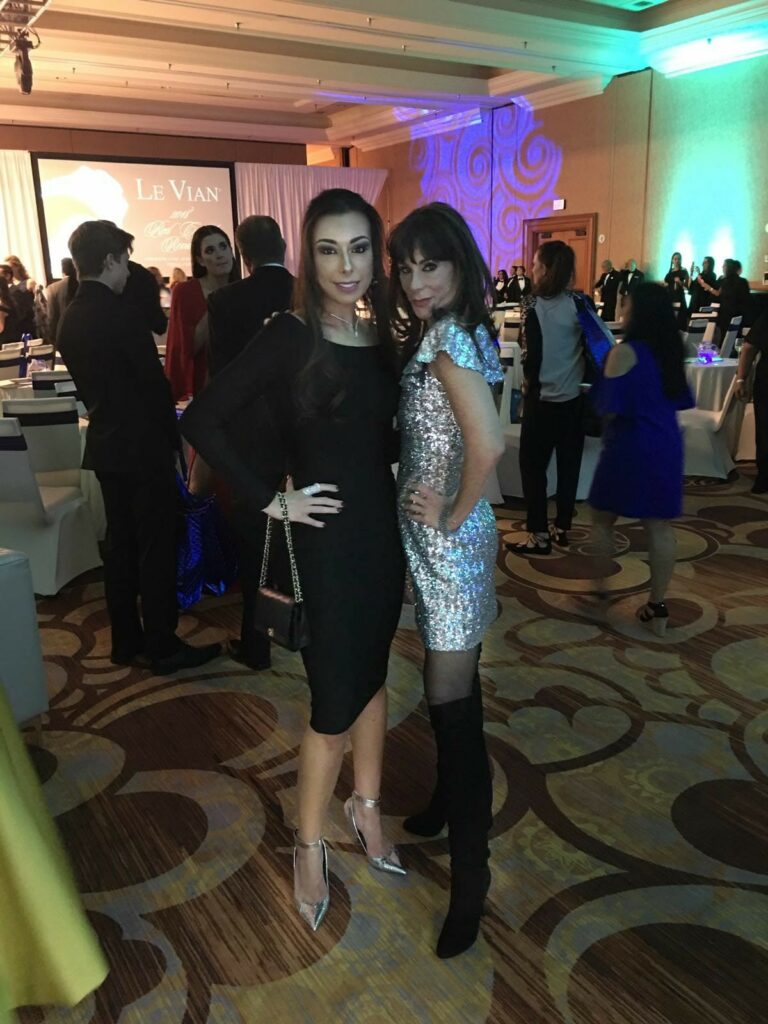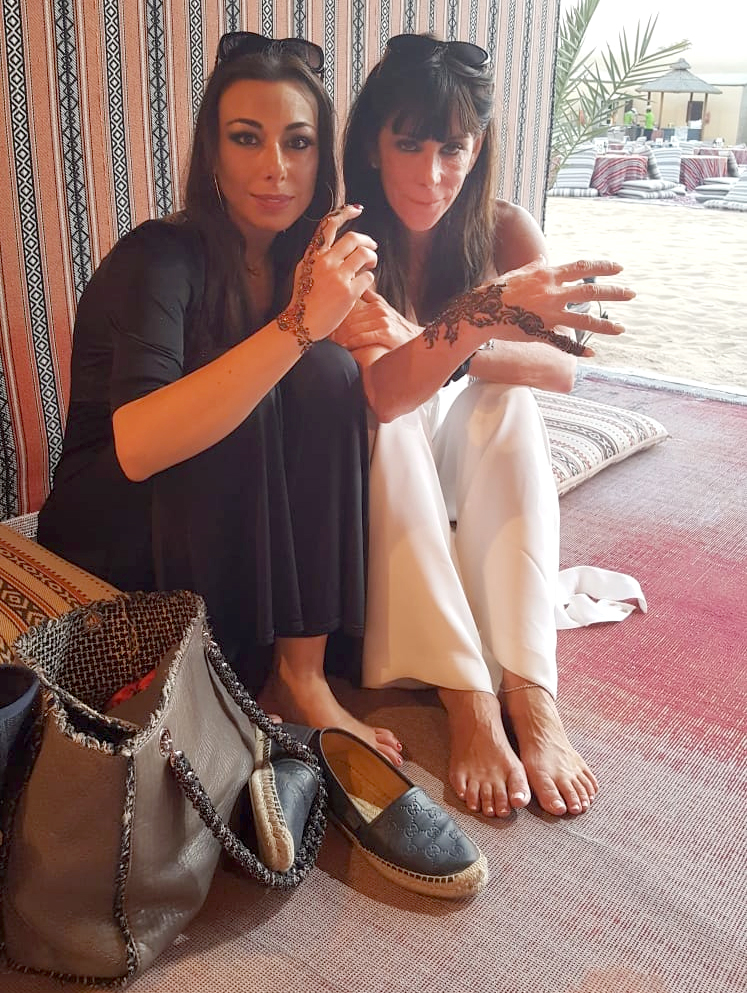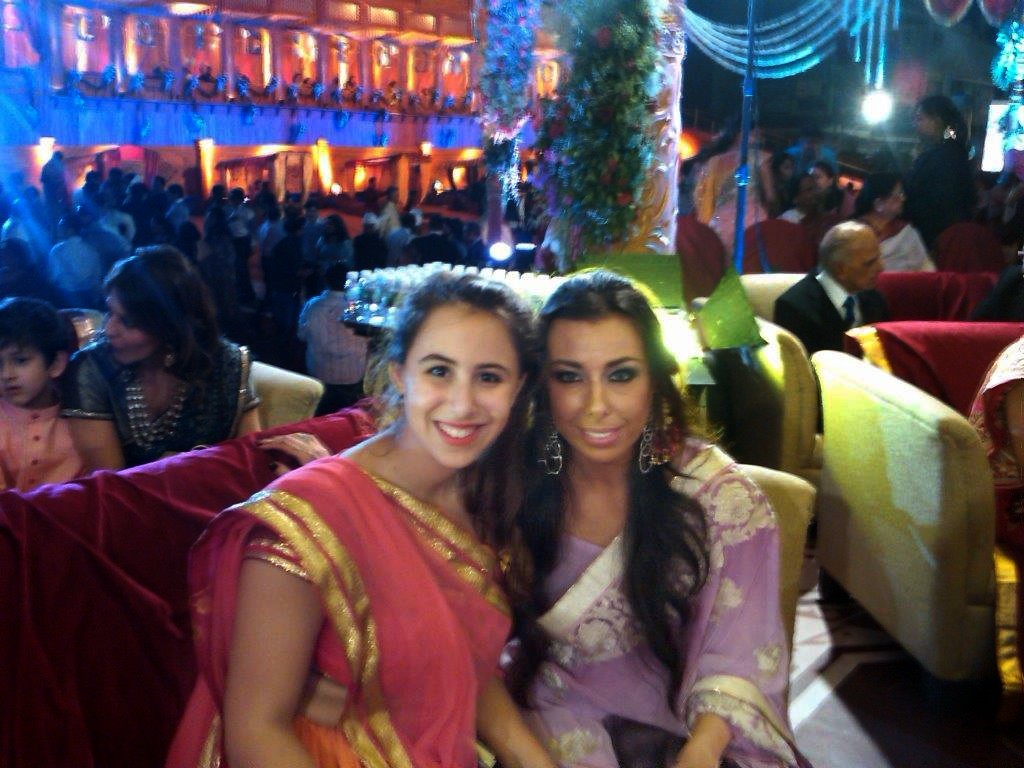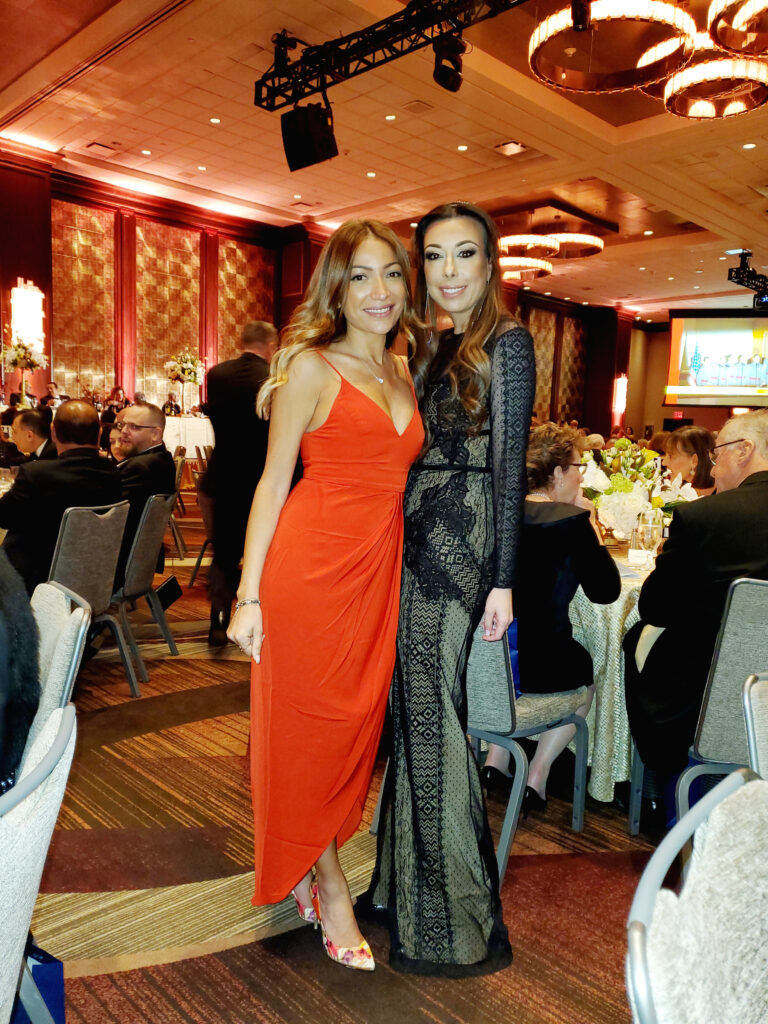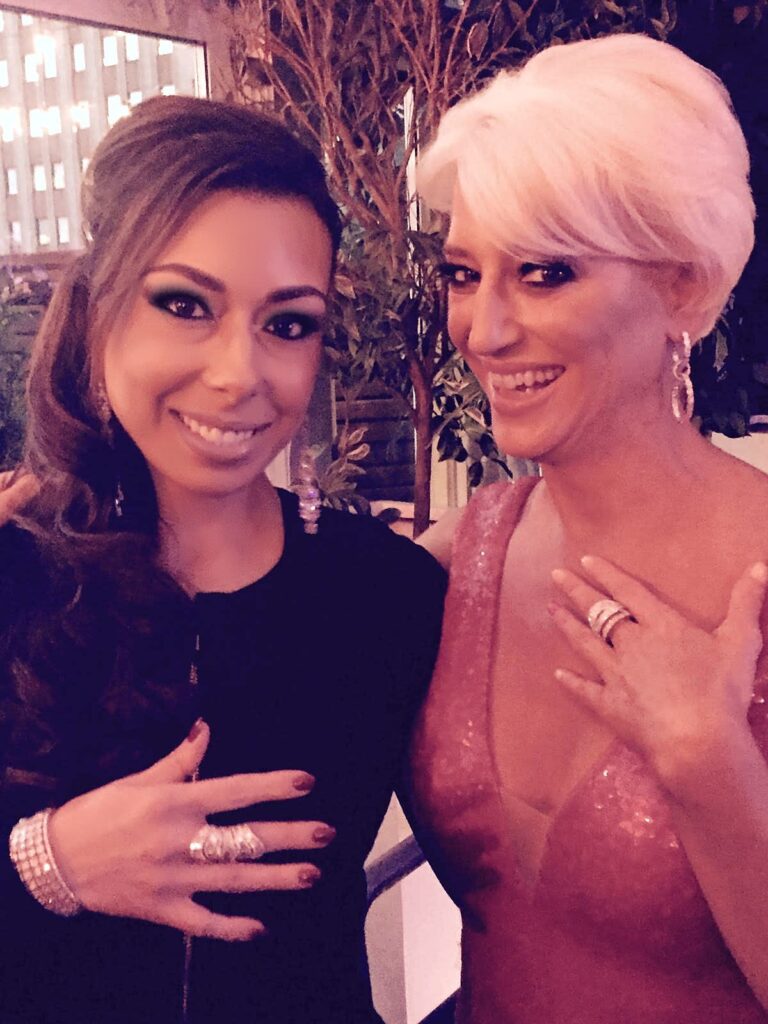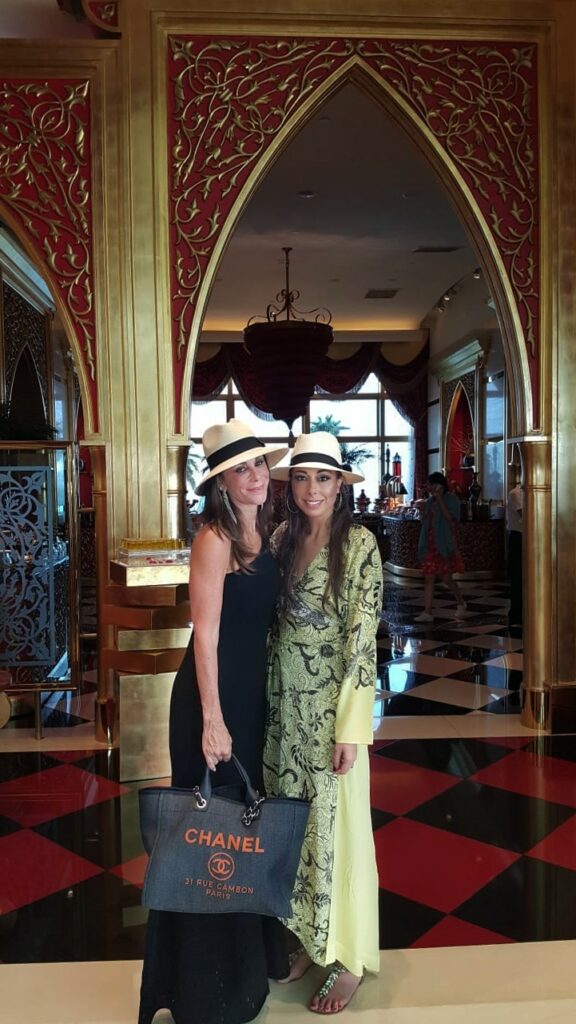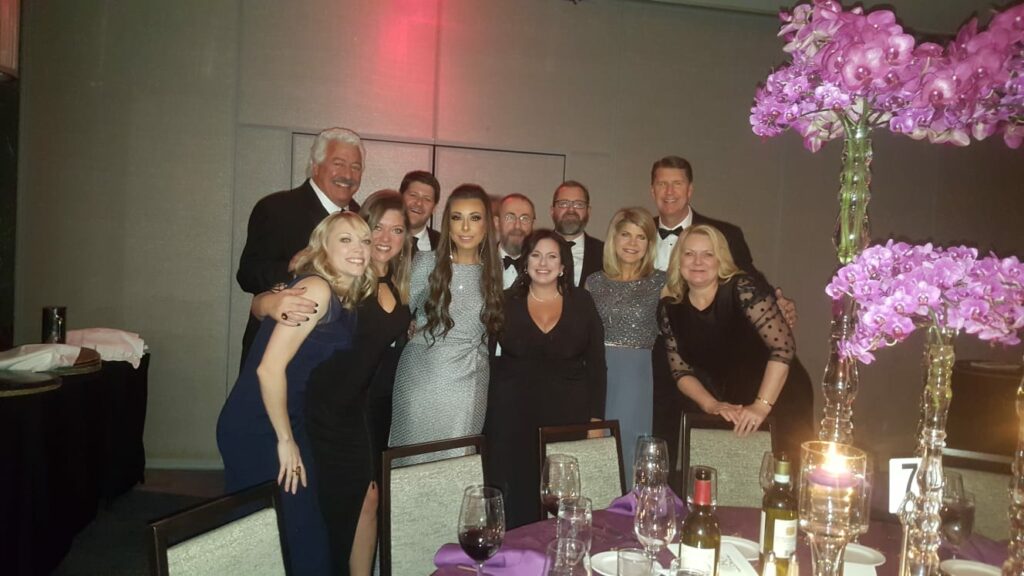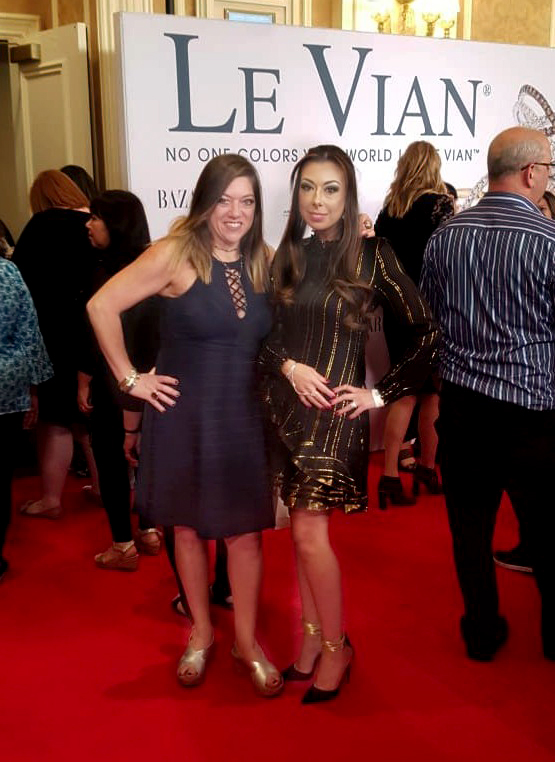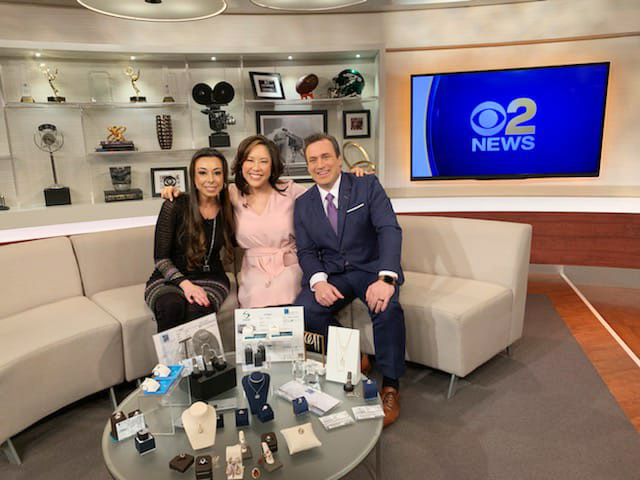Jewelry Style Through the Ages: 1920s
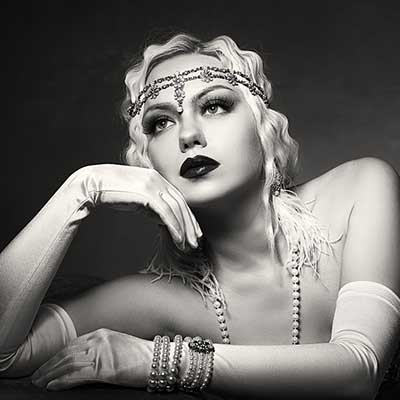
The 1920s were the dawn of a new era. The first world war was over, technology was advancing, and women could finally vote. A rapidly changing world meant that it was time to break free of the restrictive fashions of the Edwardian Era. Jewelry, at the time, was all about showing wealth. You could only get good jewelry from luxury fashion houses like Cartier, and wearing fake gemstones was considered a faux pas. After the war, however, perceptions changed. Jewelry became less about class and more about personal style and self-expression.
Coincidentally, the 1920s was the peak of the machine age. Mass production of jewelry was possible and cheaper materials were available. By the mid-1920s, jewelry made with synthetic pearls, common metals, rhinestone, glass, and even plastic, was everywhere. The rise of costume jewelry (the name given to jewelry made from these materials) meant that women could afford to own more than one or two jewelry pieces at a time. It also meant designers had more room to be creative, which led to the creation of beautiful jewelry.
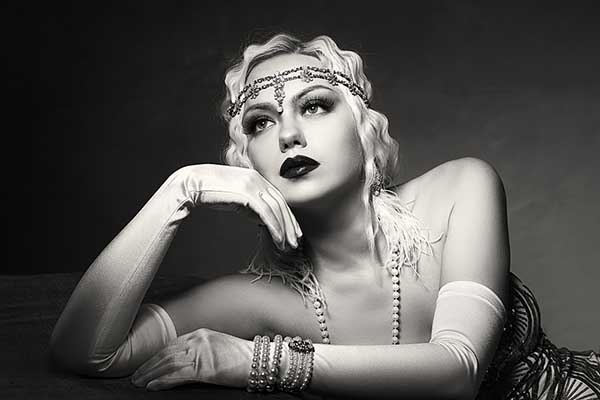
Influential Designs of the 1920s
Art Deco
In 1925, a world fair exhibition — The International Exhibition of Modern Decorative and Industrial Arts — took place in Paris, France. For seven months, 15,000 exhibitors from twenty different countries displayed their artwork in architecture, decoration, textile, fashion, and jewelry. Sixteen million people from around the world attended the exhibition, and as one would imagine, it left a lasting impression. The term Art décor was coined to describe the style of visual arts that was first on display in this exhibition.
Art décor was influential in 1920s jewelry design. Its central theme was geometry, symmetry, and boldness in color and design. Jewelry pieces took on geometric shapes with sharp edges and cleaner lines. Black and white was a popular Deco color scheme, so jewelry was often made with white metals paired with diamonds or black onyx. The infusion of other colors was bold and dramatic in typical Deco style. Common materials for making Deco jewelry were platinum, diamonds, colored gemstones (black onyx, mother of pearl, jade, coral, turquoise), and pearls (both natural and cultured).
Filigree
Filigree is an intricate form of metalwork used for designing jewelry. Filigree pieces are usually made from threads of gold and silver intertwined with tiny beads and arranged into a pattern like a flower. The flower or several flowers are then attached to a metal surface to form a piece of jewelry. With the growth of industrialization, filigree jewelry became easy to make, and this led to an explosion in manufacturing in the 1920s.
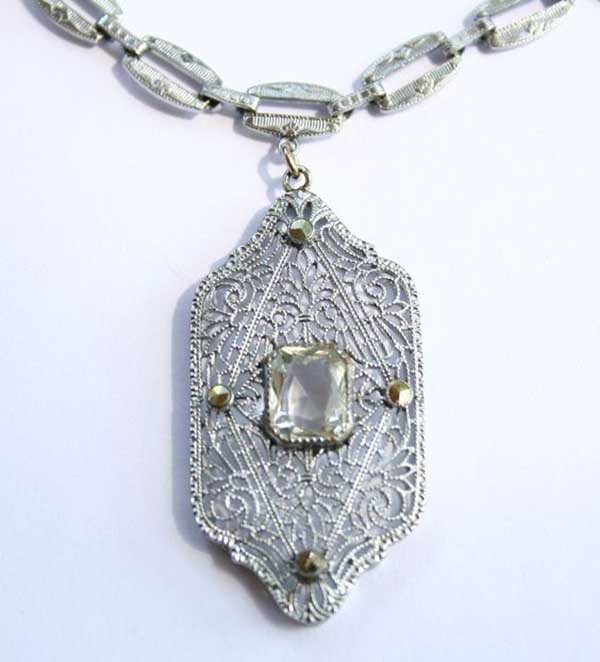
1920’s Marcasite Filigree Necklace & Pendant
Popular Types of 1920s Jewelry
Long, Dangling Necklaces
The plunging necklines in 1920s dresses led to a growing demand for long necklaces and pendants. The sautoir, a long, flowing chain or bead necklace set with jewels, was a common choice. Long pearl and bead necklaces were also fashionable, thanks to designers like Coco Chanel.

Art Deco Emerald and Diamond Sautoir by Cartier circa 1926, previously owned by HRH Princess Faiza of Egypt
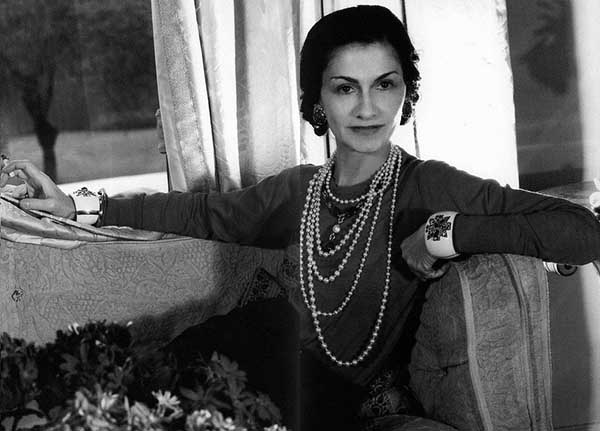
Coco Chanel wearing layers of long pearl necklaces, a popular 20s look
Drop Earrings
Because women were beginning to wear their hair short, long drop style earrings came into trend. Diamonds were excessive for everyday use, so earrings were often made with precious stones like jade, onyx, pearl, and coral.
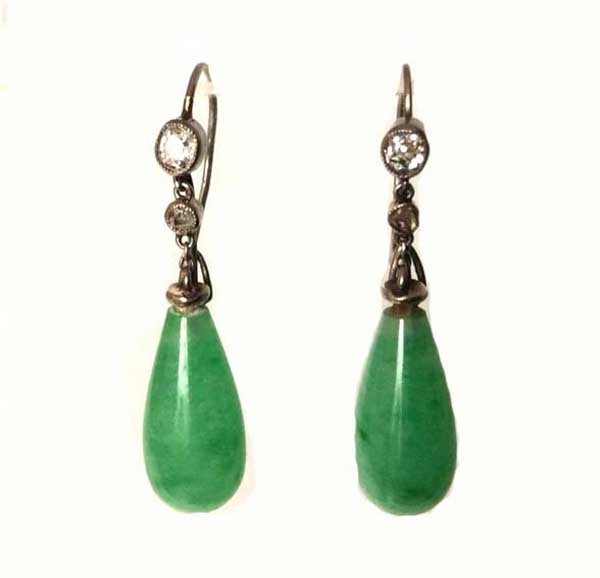
1920s Green Jade Drop Earring

1920s Silver & Crystal Filigree Drop Earrings
Bracelets
Bracelets came into the spotlight in the 1920s thanks to shorter sleeves on dresses. Popular styles at the time were line bracelets made with diamonds and platinum, gold-and-silver-plated bangles which were worn on the upper arm, filigree bracelets, and colorful plastic bangles.
Double-clip Brooch
One item of jewelry that is most typical of the 1920s is the double-clip brooch, or Duette. First designed by Cartier in 1927, the Duette is a dress clip that can be separated into two identical pieces. The pieces can then either be worn separately or together as a single brooch. Dress clips were an essential piece of jewelry in the 1920s, so the Duette was a must-have. Women wore it on lapels, belts, handbags, and hats.
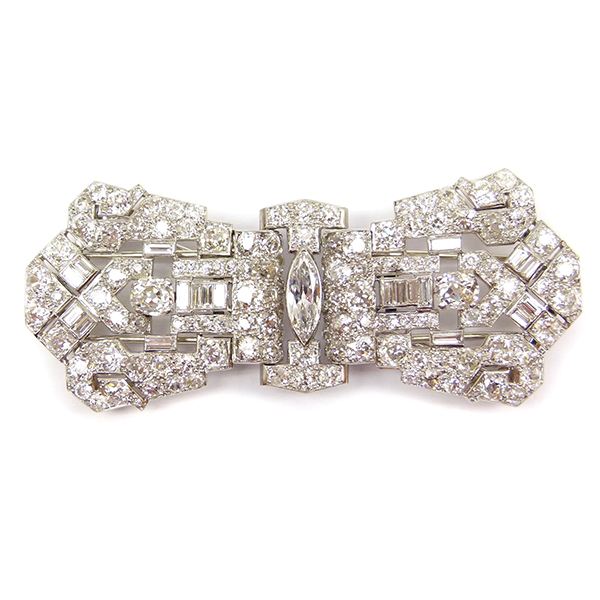
1920’s Diamond Double Clip Brooch
Cocktail Ring
Despite the prohibition of alcohol in the 1920s, drinking became popular for women. In fact, it was the first time in US history that women went to bars (known then as a speakeasy). The affluent women who attended speakeasies wore big rings with large center stones aptly named cocktail rings. The purpose of this ring was twofold. It was a way to draw attention to the glass in your hand (drinking was a sign of privilege), but more importantly, it was a symbol of independence. Most cocktail rings from this period feature diamonds in the center.
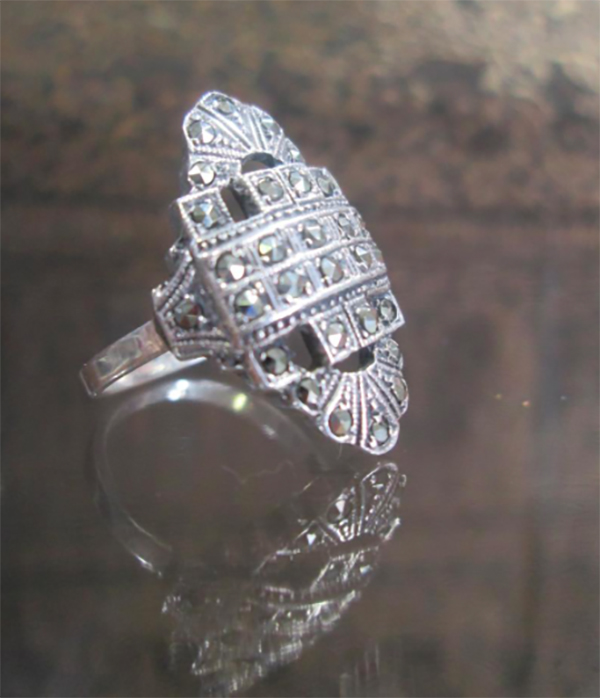
1920’s Silver and Diamond Cocktail Ring
Famous Jewelers of the 1920s
Coco Chanel
Chanel played a big role in the acceptance and popularity of costume jewelry. She believed that jewelry should be worn solely as decoration, and would often combine costume pieces she designed with the fine jewelry she owned. Chanel’s most iconic costume piece was the Maltese Cross Cuff designed in 1927 by her good friend, Duke Fulco di Verdura. Verdura wanted to emulate a collage of gems which he and Chanel admired on a trip to Italy. So, he combined mismatched gold brooches with multi-color semiprecious stones and placed them on a large white enamel cuff in the shape of a cross. The result was a vibrant and colorful bracelet that Chanel loved. She wore them everywhere, and pretty soon enamel cuffs were a trend.
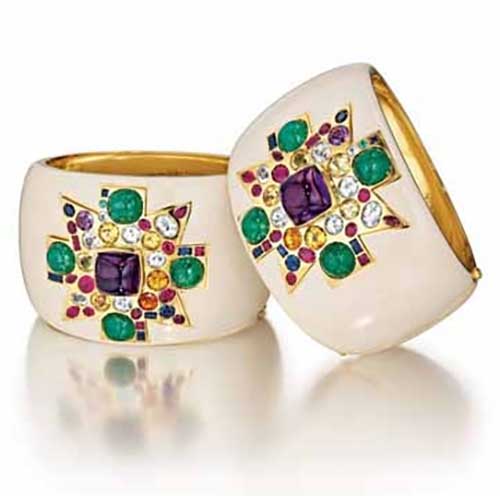
Chanel’s Maltese Cross Cuff
Mario Buccellati
Buccellati, the Italian jewelry maker, was well known for his exemplary work with metal. His standout piece of the era was the Clotilde Tiara. It was a silver crown lined with gold, with open branches set with rose-cut diamond and pearls.
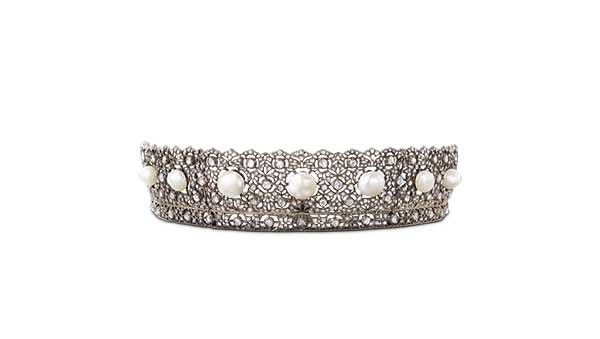
Buccellati’s Clotilde Tiara
Cartier
No list of influential 1920 jewelers would be complete without mentioning Cartier. The jewelry house reached the peak of its fame in the 1920s. Inspired by art deco, Cartier designed some timeless jewelry, most notably the ‘Tutti Frutti’ pieces.
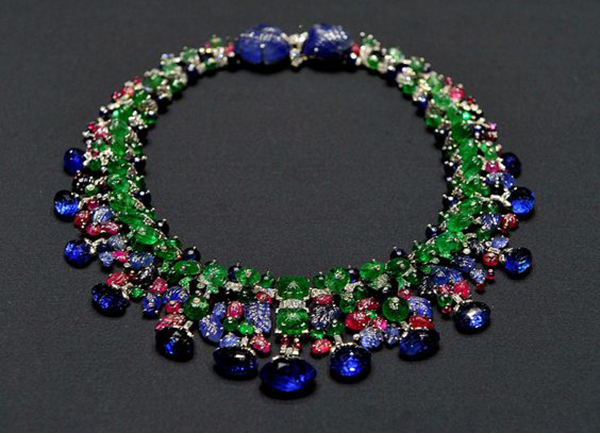
A Cartier Tutti Frutti Necklace
An Exciting Era
The 1920s forever changed the way jewelry was made and worn. Although the decade ended in yet another war and a recession—putting an abrupt end to the roar—we will never forget the exciting revolution that the 20s brought to fashion, jewelry, and womens’ lives.
Related Articles:
Jewelry Style Through the Ages: 1980s
Jewelry Style Through the Ages: 1970s
Jewelry Style Through the Ages: 1950s
About The Author
Debbie Azar is the Co-Founder and President of Gemological Science International (GSI), one of the largest gemological organizations in the world, and a distinguished leader in the global diamond and jewelry industry. As an executive with extensive knowledge of the jewelry and gem lab industries, her entrepreneurial skills and vision have helped GSI achieve rapid and continuous growth worldwide, establishing 13 leading-edge gemological facilities on four continents. She currently serves on the boards of the Jewelers Vigilance Committee, Responsible Jewellery Council, and Jewelers for Children, and is a member of the 24 Karat Club of New York. She has been featured in Forbes, Daily Mail, Good Morning America, Bloomberg, Bloomberg Businessweek, Fox Business, Fox5, CBS2, BOLDTV, Varney&Co, The Street, and NASDAQ, among others.
